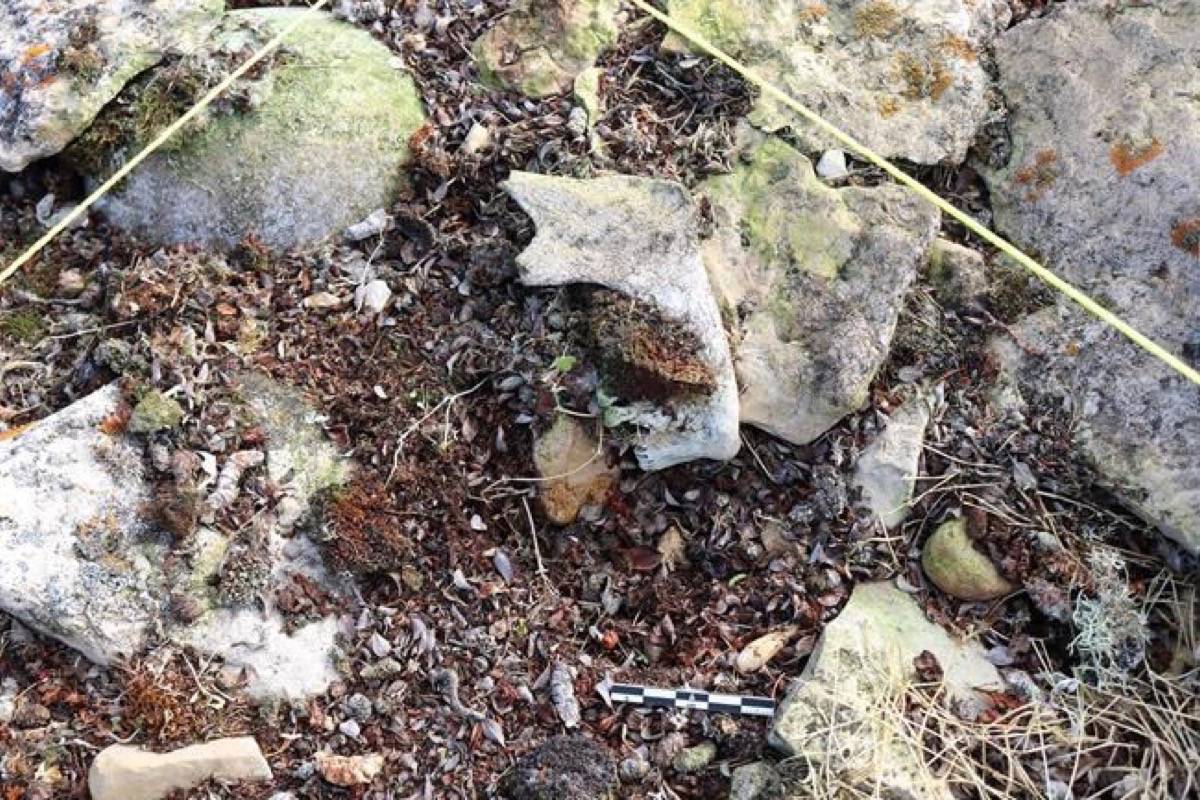An Ontario researcher has used modern technology to clearly identify the final resting place of an officer from the Franklin Expedition, adding fresh information to the ongoing quest for details on the ill-fated search for the Northwest Passage.
Douglas Stenton, a faculty member at the University of Waterloo, also unearthed a collection of artifacts believed to belong to senior members of the expedition’s crew after using a combination of past and present-day maps as well as metal detectors for his work in Nunavut.
His findings build upon and validate the efforts of 19th-century archaeologists who visited the same strip of land on the west coast of King William Island in 1879 and named the area Two Grave Bay after reporting a pair of burial sites there.
Stenton, the former heritage director for the territory of Nunavut, said discrepancies between today’s maps and those produced on that expedition had made it difficult for modern explorers to reproduce those earlier findings.
“I wanted to go and take another look at this location to see if we could locate one or both of these graves,” he said in a telephone interview. “We were successful in doing that.”
The mysteries surrounding Sir John Franklin’s quest for the Northwest Passage have captivated many for decades. Researchers began looking into the circumstances of the doomed mission shortly after it became evident that something went awry.
Franklin left England in 1845 with 129 men aboard two vessels to search for a northern sea route between the Atlantic and Pacific oceans. No one returned, and search missions determined that both the HMS Erebus and HMS Terror became ice-bound and were abandoned.
Questions about the fates of both captain and crew prompted various follow-up expeditions bent on discovering what happened, including an 1878 voyage by sledge led by American researcher Frederick Schwatka.
In 1879, Schwatka reported finding the burial sites that gave Two Grave Bay its name. His records detailed skeletal human remains, pieces of navy blue cloth, and buttons presumably belonging to members of Franklin’s crew, Stenton said.
Stenton, who has long been involved in efforts to unearth information about the Franklin expedition, felt Schwatka’s records offered a good starting point for new exploration.
“I looked at the historical map, I looked at the contemporary map, and I thought, ‘well, this is one that we could probably narrow down the general area,’” he said. “Based on that, I made it a search priority.”
In late August, Stenton and two members of the Canadian Coast Guard began combing the area around Two Grave Bay.
They zeroed in on a cluster of rocks that appeared to have been deliberately arranged and used metal detectors to search for the gilt buttons Schwatka documented nearly 140 years ago.
Stenton said they soon found one, which led to other discoveries.
All told, Stenton and his team recovered three metal buckles, 10 gilt buttons and remnants of an 11th made of mother of pearl. Stenton said such accoutrements were likely only worn by officers or senior-ranking members of Franklin’s crew.
Stenton said his team then found human bones some distance away, including an intact skull and jawbone, as well as a partial calf bone.
He said his research partner hopes to conduct DNA tests on those remains. Researchers, he said, have already extracted genetic profiles for 24 of the expedition’s crew members and are actively trying to connect them with present-day descendents to identify specific sets of remains.
READ MORE: Canada sees info ‘gaps’ about dangerous goods moving through North
Stenton’s discovery is the latest in a recent series of significant finds related to the expedition.
In September 2014, Inuit guides helped Parks Canada archeologists find the HMS Erebus in relatively shallow water off the coast of King William Island. The HMS Terror was found two years later about 100 kilometres away, capping off more than a century of efforts to locate the vessels.
Although international law gave ownership of the ships to the United Kingdom, the U.K. agreed more than 20 years ago that Canada would eventually get possession of the vessels if they were ever found. The ownership transfer was completed in April, and Canada jointly holds title to the ships and their remaining contents with the Inuit Heritage Trust.
Stenton said the latest contribution to the Franklin story highlights the need for more archaeological research, saying every new find has potential to help discover exactly what occurred on the expedition.
“In and of themselves, any particular site is not going to change the story or change the narrative,” he said. “But they do fill information gaps for us, and they do provide opportunities for us to … apply new analytical techniques to maybe achieve a better understanding of events and what happened.”
Michelle McQuigge and Liam Casey, The Canadian Press



